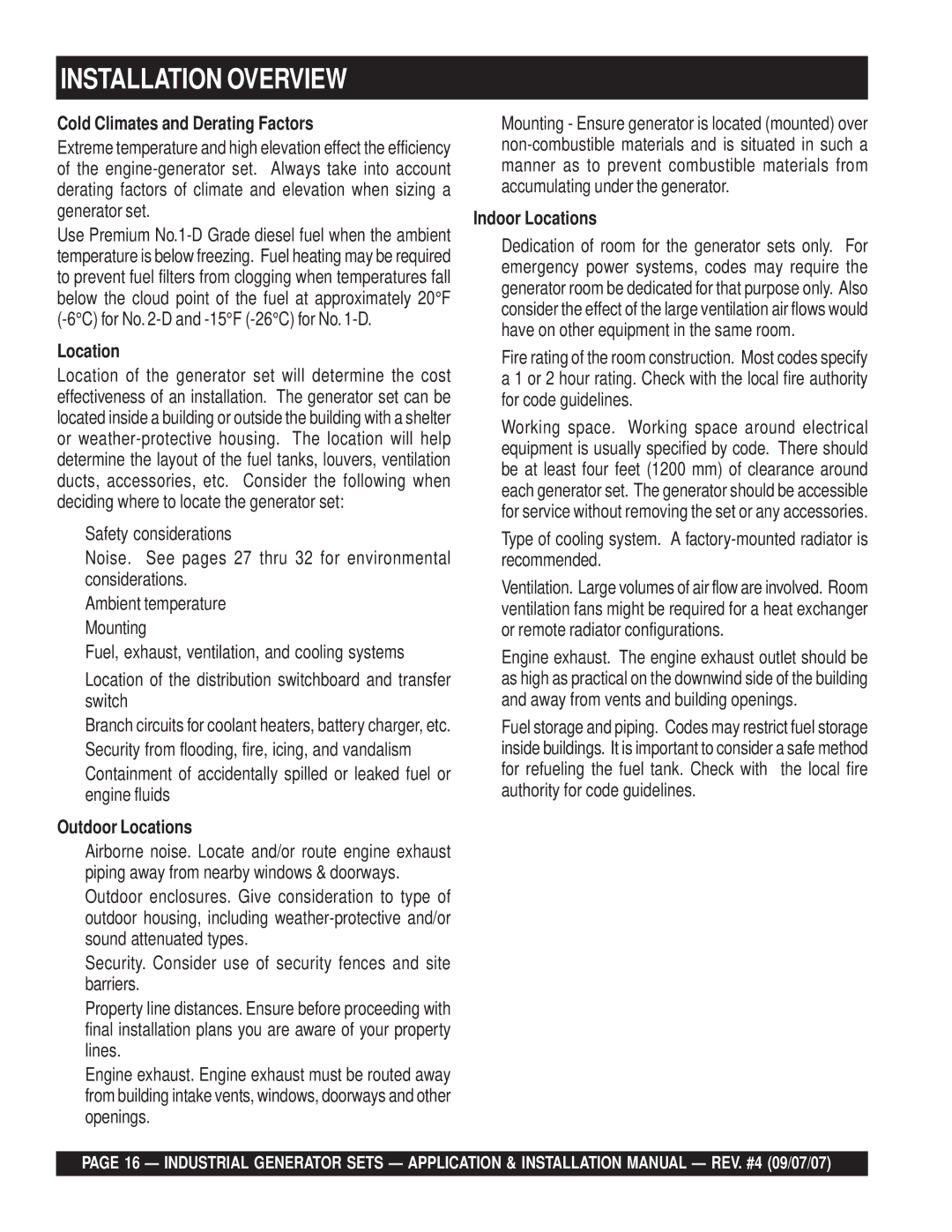
INSTALLATION OVERVIEW
Cold Climates and Derating Factors
Extreme temperature and high elevation effect the efficiency of the
Use Premium
Location
Location of the generator set will determine the cost effectiveness of an installation. The generator set can be located inside a building or outside the building with a shelter or
Safety considerations
Noise. See pages 27 thru 32 for environmental considerations.
Ambient temperature
Mounting
Fuel, exhaust, ventilation, and cooling systems
Location of the distribution switchboard and transfer switch
Branch circuits for coolant heaters, battery charger, etc.
Security from flooding, fire, icing, and vandalism
Containment of accidentally spilled or leaked fuel or engine fluids
Outdoor Locations
Airborne noise. Locate and/or route engine exhaust piping away from nearby windows & doorways.
Outdoor enclosures. Give consideration to type of outdoor housing, including
Security. Consider use of security fences and site barriers.
Property line distances. Ensure before proceeding with final installation plans you are aware of your property lines.
Engine exhaust. Engine exhaust must be routed away from building intake vents, windows, doorways and other openings.
Mounting - Ensure generator is located (mounted) over
Indoor Locations
Dedication of room for the generator sets only. For emergency power systems, codes may require the generator room be dedicated for that purpose only. Also consider the effect of the large ventilation air flows would have on other equipment in the same room.
Fire rating of the room construction. Most codes specify a 1 or 2 hour rating. Check with the local fire authority for code guidelines.
Working space. Working space around electrical equipment is usually specified by code. There should be at least four feet (1200 mm) of clearance around each generator set. The generator should be accessible for service without removing the set or any accessories.
Type of cooling system. A
Ventilation. Large volumes of air flow are involved. Room ventilation fans might be required for a heat exchanger or remote radiator configurations.
Engine exhaust. The engine exhaust outlet should be as high as practical on the downwind side of the building and away from vents and building openings.
Fuel storage and piping. Codes may restrict fuel storage inside buildings. It is important to consider a safe method for refueling the fuel tank. Check with the local fire authority for code guidelines.
PAGE 16 — INDUSTRIAL GENERATOR SETS — APPLICATION & INSTALLATION MANUAL — REV. #4 (09/07/07)
